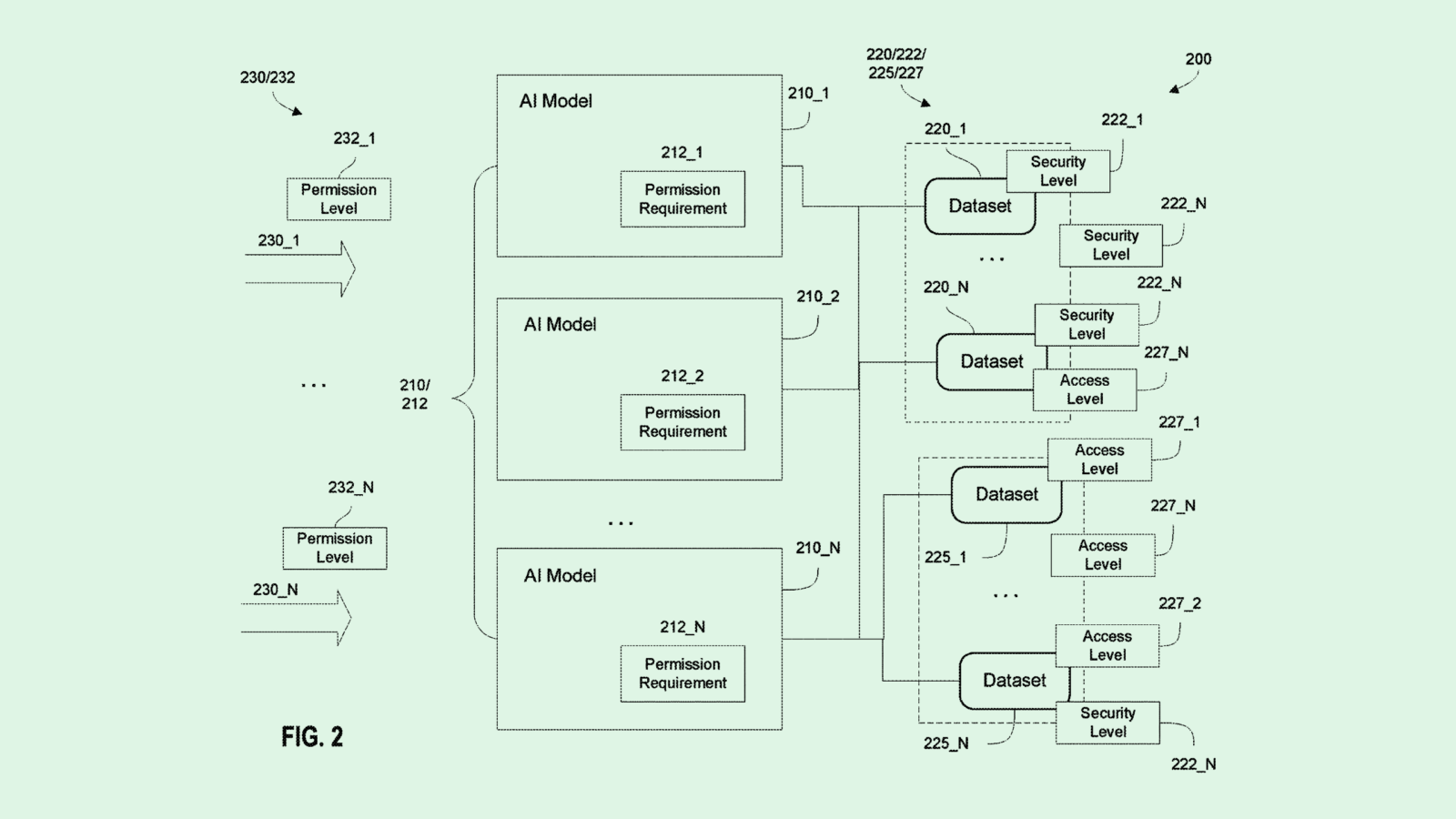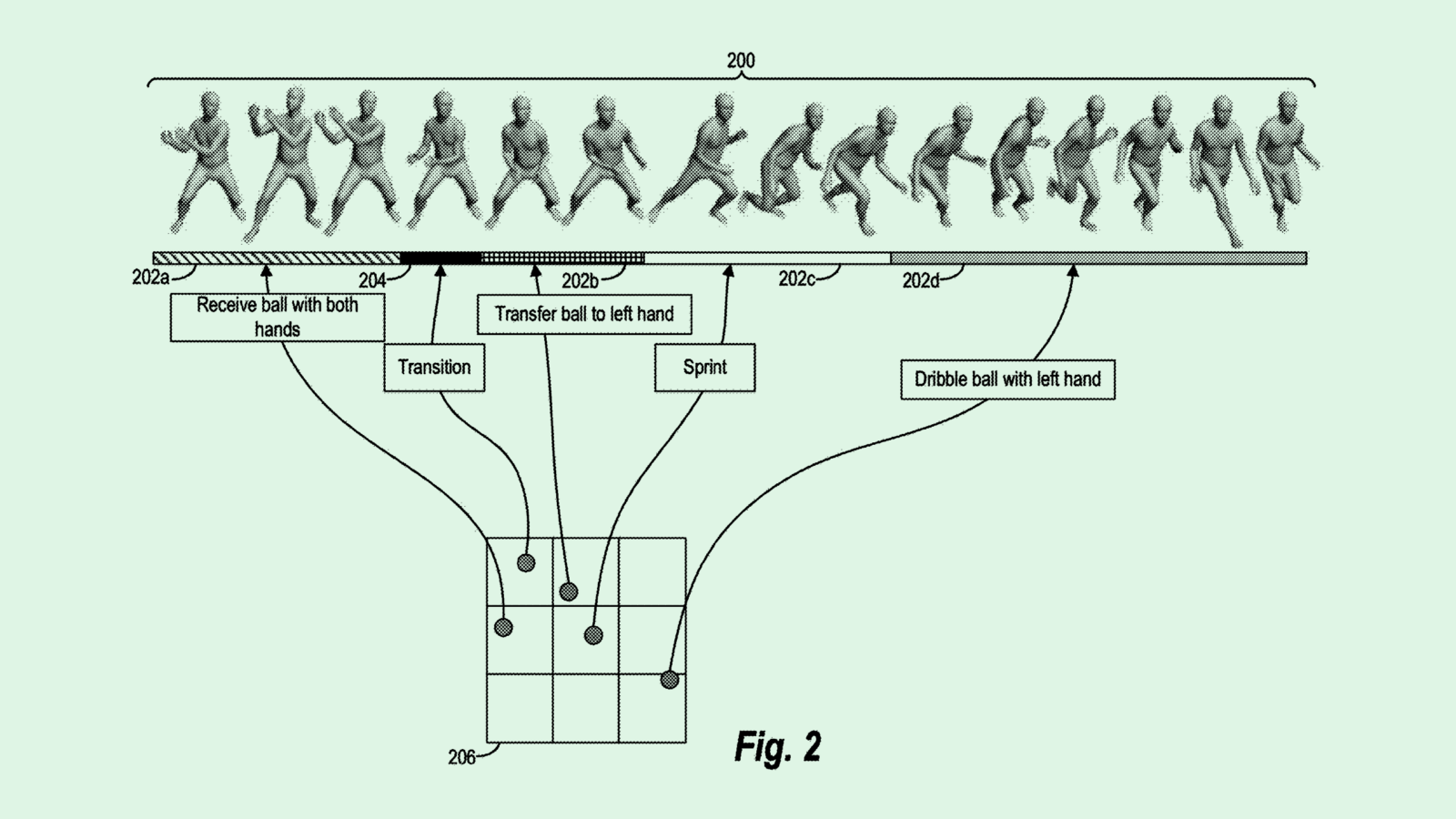Happy Monday and welcome to Patent Drop!
Today, a patent from Palantir to modify outputs based on the user highlights the importance of data security in AI when used in government and defense contexts. Plus: Adobe wants to make AI-generated motion look more natural, and Lyft puts self-driving vehicles to the test.
Let’s get into it.
Palantir’s Model Bouncer
Palantir wants to make sure its data is in the right hands.
The company is seeking to patent a system for “security-aware large language model training and model management.” Palantir’s tech aims to gatekeep a model’s outputs based on whether or not a user has permission to access them.
Because machine learning models often require data from lots of sources to learn niche tasks, in some instances, “multiple data sources for the ML model training may have different access and/or use requirements,” the company said in the filing. Given that these models still face data security risks, the use of restricted data may present issues.
To overcome this, when a large language model is trained on data that has certain access permissions, Palantir’s system links those permissions to the model post-training. The training data is segmented into different parts based on those permissions. For example, half of it may be public, and the other half may be private, for a certain group.
Then, when someone uses the model, the outputs vary based on that user’s specific permissions. For example, if a user was given access to the data or information the model was trained on, they may receive more in-depth outputs than someone who doesn’t have that access. In some cases, the user may not be allowed access at all.

It makes sense why Palantir wants to make sure its models are saying the right things to the right people. The company’s primary moneymaker is government and defense contracting – in September, it won a $100 million contract to expand access to its AI targeting tech to more military personnel, adding to the $480 million defense contract it scored in May.
In those contexts, it’s vital to make sure information is in proper hands, said Bob Rogers, Ph.D., the co-founder of BeeKeeperAI and CEO of Oii.ai. “You can definitely see where the [Department of Defense] would want that type of control,” said Rogers. “Just because Bob the Janitor has a login, that login should not give you access to the nuke codes.”
Since AI models often suffer data security slip-ups, tech like this emphasizes the need for “zero-trust” security measures, or those that assume no device or user is trustworthy, said Rogers. This kind of security aims to make the impact of a breach or leak “as small as possible,” he said.
“Think of all the different places that different accesses are going to pop up, and how much information is going to be mingling around from different AIs,” Rogers added. “If they can’t control who has access to what, it’s going to be really tricky.”
Because Palantir’s tech involves the AI model itself “managing its own security model,” Rogers said, it may provide a much more efficient means of monitoring what information goes where without having to keep an eye on every output.
And with the sheer number of AI integrations being pushed in in the tech industry and beyond, more innovations like this are likely to come. “It’s very appropriate for companies to be thinking about how to create AI that’s self-regulating,” Rogers said.
Adobe Goes Through the Motions
Adobe wants to know your next move.
The company filed a patent application for “generating human motion sequences” using neural networks to analyze and reconstruct them. Adobe wants to make human movements in AI-generated videos and animations seem more natural.
“Conventional image generation systems suffer from a number of shortcomings with regard to efficiently, flexibly, and accurately generating and reconstructing human motion sequences,” Adobe said in the filing.
To start, this system uses an encoder, or a neural network-based system that converts data into a format that the model can read, to process motion data taken from a digital scene. The encoder captures feature representations, which are the characteristics of human motion.
Those feature representations are “discretized”: Rather than representing one fluid motion, each movement is one discrete piece of data. Those discretized motions are stored in a “codebook.”
When someone wants to generate an animation of human motion, Adobe’s tech basically reverses this process: Discretized movements are picked from the codebook and run through a neural network-based “decoder,” which takes those feature representations and generates them into a video of fluid human motion.

As Adobe’s main offerings revolve around image and video work, it adds up that the company is seeking patents like these — especially now that major tech firms see generative video as the next frontier of AI. OpenAI, Google, Meta, and TikTok parent company ByteDance have all pushed forward with their own research and offerings in recent months.
Adobe hasn’t been left out of the race. The tech firm announced last week that it would begin rolling out its own text-to-video model, called the Firefly Video Model, to compete with other major players. Though it’s started to open up the tool to those on its waitlist, the company has not given a general release date.
Though Adobe has a lot of competition in the market for generative video, it may have a few advantages. For one, the company already has a large and dedicated user base, and is largely considered an industry standard for image and video editing.
The company also claims that its main generative AI offering, Firefly, is commercially viable, as it’s trained on millions of licensed and professional-grade images, rather than relying on internet scraping or non-commercial sources of image data. And as AI image generators like Google, Midjourney, and Stability AI face copyright lawsuits, that may be a point in its favor.
Lyft’s Self-Driving Test
As Lyft continues to build out its autonomous vision, the company wants to make sure its cars aren’t going haywire.
The rideshare service is seeking to patent a system for “autonomous vehicle performance evaluation.” Lyft’s tech essentially calculates the efficiency and reliability of an autonomous vehicle in real time when choosing between human drivers and self-driving cars.
The patent offers an evaluation system other than “miles per intervention,” or “the average number of miles traveled by one or more autonomous vehicles before a driver or autonomy system disengages,” the company said. “MPI has a weak and inconsistent correlation with actual performance.”
Lyft uses a number of different benchmarks to determine the performance metrics of an autonomous vehicle in any given ride request. For one, the system may look at pickup location and distance traveled to determine the “utility metric” of sending a self-driving car, considering things like local restrictions and previous rides in the area.
Another primary metric is “disengagement.” This refers to incidents when a car’s self-driving feature turned off, and whether those situations had a negative outcome. Negative outcomes could range from collisions or near-collisions to simply “elegance violation,” in which the vehicle “would have violated a comfort and/or elegance rule if the driver had not intervened.”
Finally, it may also determine the comfort level of the riders themselves with autonomous driving — for example, based on whether or not they’ve taken autonomous rides previously. All of these calculations help ensure Lyft is only sending autonomous vehicles into situations they’re best suited for.

Autonomous vehicle companies have been busy lately. Tesla held its long-awaited robotaxi event, called “We, Robot,” earlier this month, unveiling its two-seater robotaxi product called the Cybercab and its larger vehicle, called the Robovan, which can accommodate up to 20 people.
Google’s self-driving division Waymo has also quickly gained speed, hitting 100,000 weekly paid rides last month, according to Bloomberg Technology. And Uber, Lyft’s biggest competitor, announced in late August that it would begin offering autonomous vehicle rides on its platform in partnership with Cruise.
Lyft has been working toward autonomous vehicle integrations for years, though it’s faced a bit of a rocky road in the space. The company partnered with Ford-owned Argo AI in 2021 for self-driving rides in Miami and Austin, but shut down the offering in late 2022 after the startup ceased operations. Lyft also partnered with self-driving car firm Motional in 2022 for rides in Las Vegas, but the startup halted the partnership in May to focus on restructuring.
Despite the competition and roadblocks, Lyft CEO David Risher said in August that he still expects autonomous vehicles to be a “huge tailwind for rideshare because it’s gonna add more supply… certainly a safer supply over time and hopefully also a less expensive supply.”
Extra Drops
- Airbnb wants to make sure you’re getting five-star treatment. The company filed a patent application for “detecting real-time issues in guest-host messages” using machine learning.
- Ford wants to respect quiet hours. The automaker is seeking to patent a system for “controlling noise emission levels” when charging EVs.
- Google wants to learn your habits. The company is seeking to patent a system for controlling automated assistant responses and commands based on “dialog history and resources.”
What Else is New?
- Perplexity AI is in talks to raise $500 million, more than doubling its valuation to $8 billion.
- Former OpenAI CTO Mira Murati is raising funds for a new AI startup focused on building proprietary models, according to Reuters.
- Some AI detection software is likely falsely accusing students of cheating as these tools become more commonplace in schools.
Patent Drop is written by Nat Rubio-Licht. You can find them on Twitter @natrubio__.
Patent Drop is a publication of The Daily Upside. For any questions or comments, feel free to contact us at patentdrop@thedailyupside.com.
